Last Updated on July 8, 2022 by asoulwindow
Table of Contents
About Jorbeer Conservation Reserve
Jorbeer Conservation Reserve is a protected area or conservation reserve on the outskirts of the Rajasthani city of Bikaner.
Jorbeer Conservation Reserve near Bikaner has been developed as the feeding ground of some endangered species of raptors, eagles, kites and vultures with an aim to conserve them. Jorbeer Conservation Reserve is a protected land which spreads across 20-25 square kilometres.
There is proper fencing here, which clearly demarcates the set boundaries of the bird sanctuary. However, it is also easy to see several rare and endangered species of migratory birds outside the boundaries of Jorbeer Conservation Reserve.
Jorbeer Conservation Reserve which is a ‘paradise of raptors’ is also paradise for those who love birdwatching, birding and bird photography. Jorbeer also makes for a great weekend getaway from Delhi and Jodhpur, if birding interests you, that is! It is a hidden gem near Bikaner.
My childhood friendand wildlife photographer Sudeep Garg had wanted to visit Jorbeed Conservation Reserve and Tal Chappar Blackbuck Sanctuary with me since a long time. We were finally able to book our train tickets to these birding destinations in Rajasthan. Within few days, we were able to click some amazing shots of some very rare birds, raptors, mammals, rodents and reptiles.
This comprehensive blog on Jorbeer Conservation Reserve is the most detailed travelogue on birding experience here. Do share this information packed guide on Jorbeer Bikaner with other wildlife and birding enthusiasts in your circle. Jorbeer is a must-visit place for birders.
I hope that the deep insights I have shared here helps in the conservation of these raptors. It is a pity that the mainstream media ignores such topics. It is also impossible to find any information on Jorbeer Conservation Reserve in old school traditional travel guide books. This is why I wrote this detailed travel guide to Jodbeed. Here is all you wanted to know about Jorbeer.
History of Jorbeer
Jorbeer is not really a wildlife sanctuary. It is instead a vast dumping ground which is approved by the government. During my visit to Jorbeed, I noticed that carcasses of cattle such as cow, buffalo and even camels were dumped here.
Thanks to the initiative taken by the Rajasthan Forest Department, Jorbeer was turned in to a Conservation Reserve. Birdwatchers who wish to see these species of vultures and raptors closely are welcome here. Photographing these rare species is also allowed here without any fees. This is what makes Jorbeer one of the best offbeat places in Bikaner. Despite its popularity with few birders, it is largely an unheard-of place.
Soul Window Thoughts
Located away from the crowds of Bikaner city, Jorbeer is a must-visit place for avid birders like me and Sudeep. I love visiting such unexplored places. It opens up the world, I never knew existed. With all its stench and awful sights. Travel, after all, I have discovered over the years is not always rosy!
Birdwatching in Rajasthan
Not many people know that Rajasthan is a rewarding hotspot for birdwatchers. In Rajasthan, I have done birdwatching in Sonkhaliya, on outskirts of Ajmer near Pushkar, in Khichan for migratory demoiselle cranes and also in Tal Chappar Blackbuck Sanctuary.
Whether it is the dry forests in Ranthambore or marshy wetlands of Bharatpur or even the sand dunes in the Desert National Park, there is no dearth of wildlife and varied landscapes in the West Indian state of Rajasthan. While I witnessed the quirky mating dance of lesser florican in Sonkhaliya, my eyes were treated with a large variety of migratory birds in Tal Chappar Blackbuck Sanctuary. I spotted some rare birds such as Rain Quail during my birding trips in Rajasthan.
Nomenclature of Jorbeer and Jorbeer Conservation Reserve
Below are the other names of Jorbeer and Jorbeer Conservation Reserve
Jorbeer is also spelt as
- Jorbir
- Jorbid
- Jor Bir
- Jorbeed
- Jodbeed
- Jor Beed
Jorbeer Conservation Reserve is also referred to as
- Vulture Sanctuary
- Jorbeer Sanctuary
- Jorbeer Vulture Park
- Indian Vulture Sanctuary
- Jorbeer Vulture Sanctuary
- Jorbeed Conservation Reserve
- Jodbeed Conservation Reserve
Why is Jorbeer Conservation Reserve world-famous?
Jorbeer Conservation Reserve is famous across the world as it is a birdwatching haven, especially for those interested in spotting raptors. Many birdwatchers, bird photographers and birders love visiting Jorbeer Conservation Reserve for easy visibility of a variety of migratory birds, especially raptors.
This carcass dumping ground cum conservation reserve is quite popular with birdwatchers due to the ample opportunities it provides to see rare vultures and other migratory birds. Not many people know that Jorbeer is one of the largest congregation of vultures and eagles in all of Asia.
I noticed that a large number of Eagles, Kites, Vultures and other raptors stood perched on the tall branches of the trees during both morning and evening. They either nonchalantly preened or surveyed the vast buffet of carrion below them. Some would get busy pecking at the roughly scattered pieces of bones of cattle. It is a must-see spectacle in Jorbeer Bikaner.
I walked through this realm of rotten waste and noticed more. I even saw many Egyptian vultures sitting on the ground. Such ease in spotting these rare birds make Jorbeer a very popular birding site in Rajasthan near Bikaner. Eurasian Griffons and Cinereous Vultures can also be seen spreading their wings here. They do so to get maximum exposure to sun which perhaps helps them to disinfect and stay clean.
All said and done, Jorbeer is still a lesser-visited place when compared to the tourist attractions and sightseeing places of Bikaner. Jorbid, for sure is off the touristy trail in true sense.
Jorbeer carcass dump
Jorbeer carcass dump is a large dumping ground where the locals bring in the carcases of their pet cattle such as ox, cow, camel etc.
Every time cattle dies in the various parts of Bikaner district, it is brought here and dumped right at the designated spot in the middle of the conservation centre.
As many as 10 to 30 carcasses of cattle are dumped on a daily basis. These carcasses are transported here from the 40 villages that surround Jorbeer. The mess created by the carcasses is managed by the hulking stewards of waste, the vultures. And no, the raptors don’t charge a fee for their municipality services!
Birdwatching in this stench is surely the most unusual things to do around Bikaner, which is known more for its bhujiya and royal palaces.
Why Jorbeer Conservation Reserve attracts Migratory Birds?
Every year in winters, lakhs of migratory birds from the colder regions of North head to Jorbeer Conservation Reserve due to cold weather and easy availability of feeding grounds.The first batch of migratory birds arrive at Jorbeer Conservation Reserve from the month of October onwards.
The migratory birds such as vultures, eagles etc call Jorbeer their home till as late as the month of February. February onwards, they fly back to the place where they came from.
Thanks to the sufficient food for the scavengers, the sheer number of raptors at the offbeat Jorbeer Conservation Reserve is to be seen to be believed.
It was delightful to see various species of migratory and endemic birds engaged in their daily morning ritual of feeding on the carcasses. The birds looked unmindful of humans as they ripped apart skin of the dead cattle ruthlessly. The feral dogs nearby gave them company. Despite with competitors, they co-existed together.
Conservation efforts at Jorbeer
Being a wildlife lover, I remember reading a distressing news about poisoning of raptors. This led to a massive drop in the number of raptors, eagles, kites and vultures etc. After research, it was found out that the birds were dying in large numbers due to the use of diclofenac, which is a pesticide.
This happened around the 1990s. This was the time when veterinary use of diclofenac was weaking havoc on the population of vultures in India. The wildlife conservationists were alarmed when they noticed that the vulture population of India had suddenly gone down by a worrisome 90% approximately. Ever since lot of conservation effort and scientific research has been carried out.
The cattle used to feed on the plants sprinkled with diclofenac. Due to this, when a bird fed on the carcass of a cattle who fed on plant sprinkled with diclofenac, it used to lead to their death as well.
Diclofenac was used as a pain-killing medicine for ailing cattle to make them feel better. It was widely popular across India. However, it resulted in renal failure in vultures after they ate the affected carcasses of cattle.
This veterinary drug used to leave traces in cattle carcasses which the vultures fed upon. Clearly, diclofenac turned out to be deathly and poisonous for eagles, kites, raptors and vultures alike.
Immediate action was taken when the impact of diclofenac on the population of carnivorous birds was ascertained. Luckily, shortly after diclofenac was banned for use as a pesticide and medicine in India in the year 2006 by the Indian Government. Thanks to these efforts, steady increase in the population of kites, vulture, eagles and other raptors have been observed here.
Even today, the concerned authorities study and monitor the reproductive ecology, population numbers, nesting habits and habitat of vultures.
Even today, diclofenac is used surreptitiously by some irresponsible people. To combat this menace rules are made to inspect the carcasses of cattle for the presence of diclofenac before they are dumped in Jorbeer.
If found infected with diclofenac, carrions are buried deep in ground so that animals and birds do not consume it. However, I am not sure how religiously this is practised.
Having said that, the rising numbers of vultures are comforting. Not only is population of raptors in Jorbeed has risen in recent past, they are now found here throughout the year, indicating the good health of the local ecosystem.
What role Vultures play in ecosystem?
Why do we need vultures around? Vultures are the ultimate clean-up crew nature has blessed us with. Vultures are often shown in poor light in popular culture and folk tales. However, Garuda has always been a revered bird in the scientific Hindu religion. Vultures, Eagles, Kites, Raptors, Crows, Ravens and other meat-eating birds and animals are nature’s apostle of efficient waste management.
They keep the ecosystem healthy by consuming the carrions and leaving no flesh left out in open to rot. It is common to see vultures ripping apart and eating every shred of flesh, leaving behind only bones of the carrion. This helps in keeping the nutrition cycle continue.
How Vultures kill bacteria
The specialised digestive systems of vultures are known to have highly corrosive, stomach acids which kills bacteria efficiently. This also aids in reducing the spread of various diseases in the habitat where they feed.
I often wondered why the same bacteria which are harmful for humans cause no diseases to vultures? After visiting Jorbeer, I learnt the obvious- we are indeed made differently! The stomach acids of vultures help them in feasting on decaying flesh of carrion without the fear of catching a disease.
We all know carcasses are full of bacteria. What most of us don’t know is that the vultures have a way with the bacteria! This is how vultures neutralise the pathogens. It leads to lesser spread of harmful bacteria and deadly diseases like rabies and anthrax. This is a little-known fact!
Soul Window Observations
Vultures also play a major role in the ancient Parsi and Tibetan funeral customs. I did notice the same at the Parsi Tower of Silent in Mumbai. During Kailash Mansarovar Yatra also I saw a Tibetan funeral structure near Yam Dwar and Deraphuk in Darchen.
Which birds are found in Jorbeer Conservation Reserve?
What are the names of birds which are found in Jorbeer? This is a commonly asked question. I spotted many rare species of migratory birds at Jodbeed Conservation Reserve such as
- Himalayan Griffons from Central Asia.
- Eurasian Griffon from Turkey and Spain in Europe.
- Cinereous Vulture from the high-altitude terrains of Tibet and Mongolia.
- Steppe Eagle or Aquila nipalensisfrom Mongolia, Russia and North part of China.
Did you know that the migratory Cinereous Vulture or Aegypius monachus are the largest of all vulture species which are found in Jorbeer?
Soul Window Facts
The wide wings and rich brown plumage of Steppe Eagle had me mesmerised. The 7 well-splayed ‘fingers’ at the wingtip adds to the beauty that Steppe Eagle is. Did you know that Steppe Eagles are capable of flying as many as 100 to 200 kilometres in a single day while migrating from one country to another? This is a lesser-known fact. Being such a highly skilled flier gives it the distinction.
I was amused to see hundreds of hundreds of steppe eagles and Egyptian vultures because both of these species of vultures are listed as ‘endangered species’ according to IUCN or the The International Union for Conservation of Nature. There are so many Steppe Eagles in Jorbeer that we got tired of clicking its pictures. Steppe Eagles clearly rule Jorbeer.
What’s more? The critically endangered Indian vulture or Gyps indicus can also be seen in Jorbeer.
I found the Egyptian Vulture to be most visually beautiful. Having said that it was equally thrilling for me to spot other species such as
- Owls
- Crows
- Ravens
- Harriers
- Black Kite
- King Vulture
- Tawny Eagle
- Saker Falcon
- Laggar Falcon
- Imperial Eagle
- White tailed Eagle
- Red necked Falcon
- Indian Spotted Eagle
- Greater Spotted Eagle

These birds also lurk here for their share of fresh meat. My friend Sudeep also spotted a gorgeous bird known as Common Starling. It is a medium sized bird which has white spots on black feathers. It is also known as European starling or Sturnus vulgaris. Other small and medium sized birds which we spotted here include
- Shrikes
- Black Drongo
- Black Redstart
- Brown Rock Chat
- Spanish Sparrows
- Isabelline Wheatear
- White-browed Fantail
- Greater Short-toed Larks
- Chestnut-bellied Sandgrouse
The 7 species of vultures which are found in Jorbeer are as below:
- Long-billed Vulture or Gyps indicus
- Red-headed Vulture or Aegypius calvus
- Eurasian Griffon Vulture or Gyps fulvus
- Himalayan Griffon or Gyps himalayensis
- Cinereous Vulture or Aegypius monachus
- White-rumped Vulture or Gyps bengalensis
- Egyptian Vulture or Neophron percnopterus
Soul Window Observations
It must be noted that the vultures which belong to the Gyps family have a patchy plumage. They have a mix of bald skin and heavily feathered body parts. This characteristic helps the vultures to regulate their body temperature.
Their slender and long necks help them to dig much deeper inside the carcass when foraging for meat.
Which Birds I spotted in Jorbeer?
We saw many raptors and even small and medium sized birds in and around Jorbeer. One of the highlights of our birding trip was not raptors but Spotted Owlets or Strix occidentalis.
On one of our birdwatching trips to Jorbeer, our guide pointed towards a pair of half-asleep spotted owlets. They were very well camouflaged with the tree branch they perched at. Since our guide visits Jorbir with his clients daily, he knows exactly where to find these owlets. The early morning sun rays fell directly on the owls, enhancing their beauty unknowingly. I love such experiences when I go off the beaten track.
Below is the complete list of all the birds which we spotted in our 2 days long trip to Jorbeer Conservation Reserve near Bikaner.
- Shikra
- Black Kite
- Tawny Eagle
- Steppe Eagle
- Imperial Eagle
- Egyptian Vulture
- Cinereous Vulture
- Long-legged Buzzard
- Greater Spotted Eagle
- Eurasian Griffon (Griffon Vulture)
- Eurasian Kestrel (Common Kestrel)
- Himalayan Griffon (Himalayan Vulture)
- Indian Vulture (Indian Long-billed Vulture)
- Black-winged Kite (Black-shouldered Kite)
Other birds
- Bank Myna
- Cattle Egret
- Crested Lark
- House Crow
- Indian Robin
- Indian Roller
- Pied Bushchat
- Spotted Dove
- Grey Francolin
- Black Drongo
- Black Redstart
- Purple Sunbird
- House Sparrow
- Common Myna
- Isabelline Shrike
- Eurasian Hoopoe
- Great Grey Shrike
- Common Babbler
- Desert Wheatear
- Variable Wheatear
- Red-wattled Lapwing
- Red-vented Bulbul
- Isabelline Wheatear
- Large-billed Crow
- Brahminy Starling
- Rufous Treepie
- Jungle Babbler
- Spotted Owlet
- Greater Coucal
- Paddyfield Pipit
- Black-headed Ibis
- Long-tailed Shrike
- Large Grey Babbler
- Indian Pond-Heron
- Bay-backed Shrike
- Common Chiffchaff
- Wire-tailed Swallow
- Rose-ringed Parakeet
- Eurasian Collared-Dove
- Western Yellow Wagtail
- White-breasted Waterhen
- White-throated Kingfisher
- Brown Rock Chat (Indian Chat)
- Asian Pied Starling (Pied Myna)
- Rock Pigeon (Blue Rock Pigeon)
- Red-naped Ibis (Indian Black Ibis)
- Laughing Dove (Little Brown Dove)
- European Starling (Common Starling)
- Grey-throated Martin (Plain Martin)
- Siberian Stonechat (Common Stonechat)
- Indian Silverbill (White-throated Munia)
- Ashy-crowned Sparrow-Lark (Ashy-crowned Finch-Lark)
- Yellow-throated Sparrow (Chestnut-shouldered Petronia)
Is it safe to visit Jorbeer Conservation Reserve?
It is a frequently asked question on Jorbeed Conservation Reserve. First things first, Jorbeer Conservation Reserve is not every one’s cup of tea. Even the most experienced of birders find it difficult to stay here for long.
That said, Jorbeer remains a richly rewarding birding destination in Rajasthan. The mere sight of grand birds nonchalantly going about their business is satisfying. However, if you are not a birder, you will find it meaningless to visit Jorbeer.
I had to develop a thick skin to stand here for hours and take pictures and videos for the documentation on my blog A Soul Window. My blog is rated as one of the best travel blogs in India.
How to handle the smell and sight of carcass at Jorbeer Conservation Reserve?
Being a strict vegetarian (by choice), it was not easy for me to stand and do shooting at the carcass dump of Jorbeer Conservation Reserve. However, even for a meat eater, merely standing at the carcass dump of Jorbeer Conservation Reserve is not easy.
Despite being a perfect place for nature lover, the strong stench of decomposing dead bodies of cattle can make the hardest of people feel uneasy.
Many birders and birdwatchers prefer to keep their nose and mouth covered with a mask or handkerchief to avoid the foul smell of decaying carcasses of big cattle like camel, cow, buffalo, bull, horse, donkey, ox etc.
Duration of stay in Bikaner and Jorbeer
What is there to do in Jorbeer? How many days are sufficient for birding in Jorbeer and nearby areas. I and Sudeep spent a total of 3 days in Bikaner. This helped us make 4 birding trips in 2 days, 1 each in morning and evening.
In afternoon, we used to head back to our homestay, have bath, lunch, rest and head out again for birdwatching in evening. Since I had already visited Bikaner and seen its major attractions such as Junagarh Fort, Rampuria Havelis (Old mansions), Karni Mata Temple, National Research Center on Camel etc.
You can easily visit these tourist places of Bikaner during afternoon. But you will not be able to take rest and lunch can be compromised as well. It is possible to do 4 rounds of birding and all the local sightseeing in Bikaner in 2 days. But if you want a relaxed itinerary and if you have extra time and money then you can plan for a 4 days trip to Bikaner.
Local transport for Jorbeer
We had taken an all-inclusive package from our birdwatching guide. Our birding tour package included pick and drop from railway station, birdwatching, jeep, fuel and stay and meals in the home of guide.
If you want to do it independently, then you can easily hire a private autorickshaw from anywhere in Bikaner to Jorbeer. You should bear in mind that cheaper shared autorickshaws and buses to Jorbeer from Bikaner may not be available easily. Also, even if you find one, it will be a hassle to find another transport whether shared or private from Jorbeer to Bikaner because it is located in a deserted place.
Ensure that the reserved rickshaw or car you hire waits for 3-4 hours before you book them because it is hard to find a rickshaw or cab in Jorbeer. This is why, if traveling here on your own, always book a round trip instead of one-way trip.
Timings of Jorbeer Conservation Reserve
Jorbeer Conservation Reserve is open every day from 6 a.m. in morning to 6 p.m. in evening. Jorbeer is one of the lesser-known points of attractions in Bikaner Rajasthan.
We visited the unusual Jorbeer Conservation Reserve in both evening as well as early morning. While morning had a greater number of birds, I was able to click some stunning shots of raptors sitting on dry tree branches in the background of a deep orange colored setting sun. It looked surreal.
Best time to visit Jorbeer Conservation Reserve
The weather conditions in Jorbeer are extreme. While in summers, the temperatures of Jorbeer soar up to as high as 50 degrees Celsius, in winters expect temperatures as low as 0 degrees Celsius or less. Such extreme desert conditions are typical of many places in Rajasthan.
Winter months, especially October, November, December, January and February are the best months to visit Jorbeer Conservation Reservein Bikaner Rajasthan.
Winter is good time to pay a visit to Jorbeer Conservation Reserve because this is when lakhs of migratory birds visit various parts of Rajasthan. Thanks to the large carcass dump, Jorbeer Conservation Reserve attracts a large number of raptors, eagles, vultures apart from other migratory birds and even some rodents and foxes.
I and Sudeep visited Jorbeer Conservation Reserve on 27th and 28th November. It is the peak of winter and therefore a wonderful time to visit Jorbeer. We ended up having very good bird sightings in Jorbeer, one of the very unique places of interest around Bikaner.
Hire Birding Guide for Jorbeer Conservation Reserve
Many local birding guides offer fully guided tour at Jorbeer Reserve as well as Taal Chappar sanctuary. These birding guides should be hired because they are expert in this area. We had also hired a local birding guide which also included a stay at his home.
We had booked the guide for only Bikaner. For Tal Chappar, we booked the birding guide locally. I personally feel that if you are an experienced birdwatcher, you do not need to book a guide. Birds can be easily spotted at Jorbeer Conservation Reserve with a little effort. That said, our birding guide did help us locate some camouflaged owl species and fox, chinkara (species of deer) etc at a secret location.
Where is Jorbeer Conservation Reserve located?
Jorbeer Conservation Reserve is located towards the south-east of centre of Bikaner city. The desert district of Bikaner is located in the North Indian state of Rajasthan. Since the place smells very bad, it is located very far away from the residential areas.
It is easy to locate the Jorbeer Conservation Reserve. A large signboard welcomed me and my wildlife photographer friend Sudeep Garg on one early winter morning.
The signboard which has the picture of a vulture says in Hindi,
“Rajasthan Sarkar, Van Vibhag.
You are welcome in Conservation reserve Jodbeed, Gadhwala. Hunting is illegal here.
From
Upvan Rakshak,
Vanya Jeev, Bikaner.”
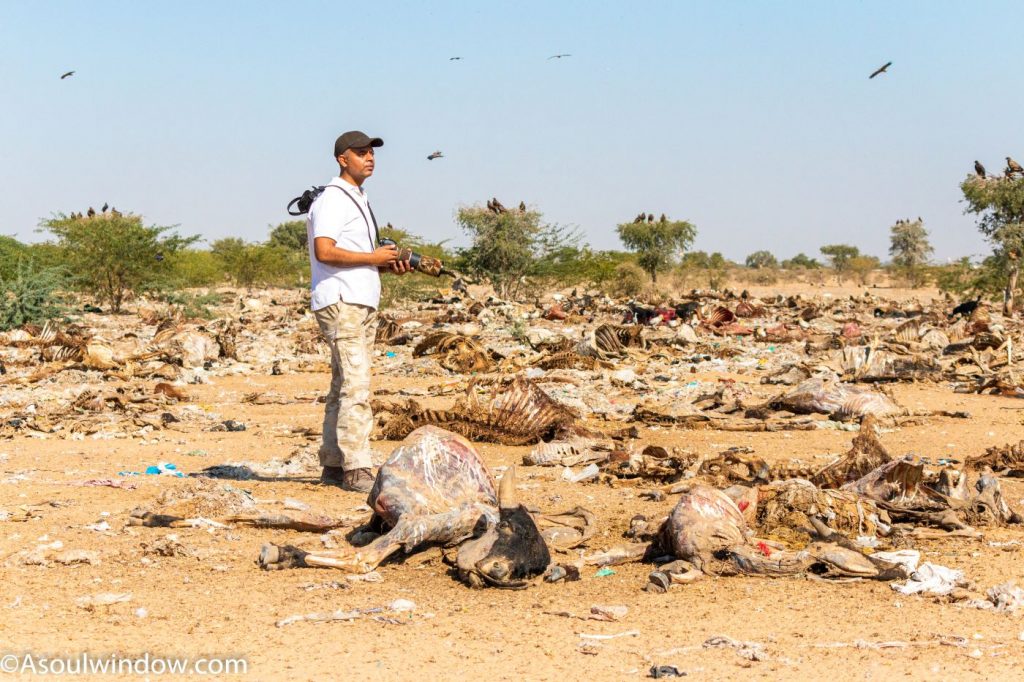
My Experience at Jorbeer Conservation Reserve
I mostly associate birdwatching with by soothing birdcalls, fresh morning air, picturesque vistas, and dense tree canopies. Jorbeer Conservation Reserve turned out to be none of this. It was a dump yard where no one would want to go to. Only determined birders and people who work here dare to venture in this stinky mess of a place. Jorbeer indeed is the most different birding hotspot I ever visited.
I found Jorbeer sanctuary to be a very unusual place to see in Bikaner Rajasthan. After getting down a little ahead of the main gate of Jorbeer Conservation Reserve, I and Sudeep decided to get off our jeep and preferred to walk. There was a watch tower, but we kept walking as there were more birds at the actual carcass dump site. The carcass dump is located 10 minutes away from the watch tower.
Thousands of endemic and migratory birds suddenly appeared out of nowhere as we neared the carcass dump. Now I know why Sudeep, who is more experienced birder, was getting excited after we arrived at entry point. It was his first time too but he knew what to expect.
The mere concentration of thousands of rare birds in a relatively small area delighted the birdwatcher in us. It was a stunning sight, which even experienced birders like us had not seen before.
I mostly stayed at the periphery of the dumping ground of carcasses. I didn’t have the heart to do photography right in the middle of the carcass dump. However, even as I stuck to the periphery, I would unknowingly end up stepping on bones, horns or skin lumps of dead animals.
The overpowering stench exuding from the decomposing meat of cattle and the macabre views were too much for me to handle in a day. It was an unusual place but I would think twice for sure before visiting Jorbeer. That said, visiting Jorbeer still is top thing to do in Bikaner if birdwatching drives you.
Skinning the carcasses
I almost vomited when I saw some men puncture the swollen bellies of dead cows. It made a loud whistle sound after the belly was punctured and some liquid oozed out. These workers were skinning the dead cattle with bare hands.
I would have never been able to do something like this in my life. As they stood engrossed in extracting skin from the dead cattle, I watched from a distance in horror. It was a strange sight which I had never seen before or after.
Beware of Feral Dogs
I saw several feral dogs feeding on the carcasses of cattle. In summers and monsoon season, when the raptors and vultures move away, it is the local feral dogs which feed on the carcasses here. I noticed that these feral dogs were very different from the tamed street dogs of India. Not only were they very aggressive but also very unresponsive when I tried to pet them.
The feral dogs are often in conflict with the other meat-eating birds which pose competition to them for food. It is not unheard-of feral dogs attacking raptors here. They are afterall competing for the same food. However, I feel there is enough food for all scavengers in Jorbeer. I had stayed away from the feral dogs and avoided attracting their attention.
On one occasion, as I approached a burrow to pet the pups, their mother charged at me and barked. She almost attacked me but I escaped unscathed. This is not how a street dog in any Indian city will respond. I realised that these dogs are different from the tamed and domesticated street dogs of India. Not only are the feral dogs territory conscious but also wild.
I also saw many feral dogs mating right in the middle of the major part of the carcass dump. I stood there thinking how did they even think of mating right next to rotting flesh. But then they were feral dogs! Perhaps, so much of flesh consumption had made them wild and aggressive.
International Birding destination
While I was immersed in bird watching, I noticed a lone affluent Chinese birder next to us. Within no time, jeep full of birders from different parts of India and various other nations had arrived in Jorbeer Conservation Reserve.
The Chinese man, who had a short height, was playing with his very large telephoto lens on a tripod. The tripod must have been as tall as him. I made small conversation with him and learnt that he had come all the way to Bikaner solely for bird photography.
He was a passionate birder. He showed me pictures of several exotic birds and mammals he had clicked in Costa Rica in Central America. Of course, he had travelled all the way to Costa Rica from China for birding.
Spotting the Desert Jird
Desert Jird deserves a special mention here. While shooting the birds with all my concentration, something distracted me. I noticed several small holes on the ground I was walking on. Something played hide and seek. I wondered, “What was that animal which just appeared for 2 seconds on the ground beneath me?”
Turned out, I had just invaded a large colony of the rapidly moving desert jirds. It was the first time I had seen a desert jird. I didn’t even know it existed. The desert jirds moved very swiftly and the moment they spotted me; they would scurry their way into the small burrows they had built.
I sat down, stopped moving and waited patiently for them to appear, all the while breathing softly. This was a successful way to be able to take their pictures and videos without scaring them away. Some holes may also belong to snakes.
This is why it is advised to walk carefully here. Not only can you step on a desert jird or snake but also trip and fall. You don’t want to be falling head down on decomposing flesh and bones of animals!
Insects of Jorbeer Conservation Reserve
Needless to say, a large number of insects also nest in the Jorbeer Conservation Reserve, thanks to the easy availability of meat to feed on. These insects are also the reason why you will also see birds like Yellow Eyed Pigeon or Columba eversmanni and Red-Naped Ibis or Pseudibis papillosa.
Yellow Eyed Pigeons
I was, in fact, delighted to see a large number of the rare yellow-eyed pigeons in both Jorbeer and a secret birding place near it. Every winter, scores of yellow-eyed pigeons stay in Jorbeer and nearby areas, making it one of the largest known wintering grounds of yellow-eyed pigeons in all of India. Told you, Jorbeer is special!
Did you know that Yellow Eyed Pigeons are winter visitors from as far as Afghanistan?It is a very shy species as quickly flies away when they spot a human as close as just 20 metres. According to IUCN, Yellow Eyed Pigeons are ‘vulnerable’ avian species. Feral Pigeons can also be spotted in Jorbeer.
Fauna of Jorbeer Conservation Reserve
I was amused to see very sparse vegetation at the Jorbeer Conservation Reserve. It reminded me of my trip to the national parks of Uganda in Africa. I feel that the scant, thorny vegetation whether in Uganda or Jorbeer helped me spot birds and animals more easily.
While walking on the almost barren land of Jorbeer Conservation Reserve, I noticed some local trees of Rajasthan such as Khejri, Ker, Ber etc. The famous vegan Rajasthani dish of Ker Sangri is made from Ker. Other trees found here include Salvadora and the medicinal Neem trees. I noticed that many feral dogs and their pups nested at the burrows in the foot of trees.
Other shrubs and trees which are found in Jorbeed include peelu or Salvadora oleoides, lotebush or Ziziphus nummularia and ghaf or Prosopis cineraria.
If you are tempted to taste the sweet and sour wild berries locally known as ‘ber’, do so only under the supervision of your birding guide.
Other mammals and reptiles found in Jorbeer
Other mammals and reptiles found in Jorbeer Conservation Reserve are as below:
- Snakes
- Chinkara
- Wild Boar
- Desert Jird
- Jungle Cats
- Desert Hare
- Desert foxes
- Blue bull or Neel Gai
- Indian Desert Gerbils
- Indian Monitor lizards
Keep your eyes peeled. You may end up spotting any or all of these during your birding trip to Jorbeer.
Exposure of plastic menace
I was also horrified to notice that large amount of plastic which lay scattered in the carcass dump of Jorbeer came from the stomach of innocent cattle. The environmental concern which faces the wildlife and cattle are regularly ignored by Governments and citizens alike. I personally never leave food in plastic and polythene bags on roads. If I have to feed a cow, I ensure it is served on leaves or paper and not plastic. But not many people do that.
It is sad to see that the cattle in Indian cities and villages end up consuming non-biodegradable waste and even hazardous things such as nails, blades etc. I have been a keen observer of this since past 20-30 years. Not much has changed since the 80s.
Jorbeer is the best place to see that even though the meat and bones of living beings are consumed and decomposed over the decades, the plastic still continues to be around as a grim reminder of its indestructibility. No microbes, falcon, eagle, raptors or insects has ever been able to get us rid of the plastic waste. Luckily, the raptors know that plastic is a waste and therefore do not touch it.
We must pledge to stop use of plastics and human littering. It is very much possible that some of these cattle died due to ingesting plastic unknowingly. This is why use of all types of plastic must be banned globally.
Entry fee at Jorbeer Conservation Reserve
Jorbeer Conservation Reserve is a free place to visit. We had a free walking tour in Jorbeer Conservation Reserve. No one asked us for any entry fee. It is a free place to visit.
We arrived early morning at the Vulture Sanctuary of Bikaner. It is a good idea to meet the forest officials and intimate them about your presence so as to avoid any legal complexities later.
Mostly, your birding guide will take care of it as they regularly visit Jorbeer Conservation Reserve and nearby places, especially during the high season of winters.
Excursion from Jorbeer Conservation Reserve
Many birders do birding trips to both Jorbeer and Tal Chappar together. We did the same. On a single trip, we visited both Jorbeer and Tal Chappar, although with different birdwatching guides. You can expect to see below species in Tal Chappar Blackbuck Sanctuary
- Waders
- Rain Quail
- Sandgrouse
- Pied Avocets
- Spot-billed duck
- Common Cranes
- Common Kestral
- Black Winged Kite
- Demoiselle Cranes
- Bar-headed goose
- Northern Shovelers
- Turtles
- Neel Gai
- Wild Boar
- Blackbuck
- Desert Jirds
- Desert Hare
- Spiny Tailed Lizard
- Indian Monitor Lizard
Some of the nearby sightseeing places in and around Bikaner are listed as below:
- Rampuria Havelis of Bikaner
- Junagarh Fort of Bikaner
- Gajner Palace, Bikaner
- Lalgarh Palace, Bikaner
- Laxmi Niwas Palace, Bikaner
- Bhandasar Jain Temple, Bikaner
- Royal Cenotaphs of Bikaner
- Sursagar Lake of Bikaner
- Prachin Museum of Bikaner
- Rat Temple of Karni Mata
- Tal Chappar Black Buck Sanctuary
- Bheruji Temple in Kodamdesar, Bikaner
- National Research Center for Camel and Equine Research Center: I had also paid a visit to the famous National Research Center for Camel and Equine Research Center. It is located near Jorbeer and the city of Bikaner.
Gajner Bird Sanctuary: Secret Bikaner wildlife n birding sites
Our birding guide also took us to some more secret Bikaner wildlife and birding sites such as the lesser-known Gajner Bird Sanctuary. We camped at the water body and patiently waited for exotic birds and animals to appear. One by one, Chinkara, Desert fox, yellow eyes pigeons, wild boars, Red-wattled Lapwings, (many) Grey Francolins appeared out of nowhere.
It is also a great place to spot House Sparrows, Spanish Sparrows, Isabelline Wheatear, Black Redstart, Greater Short-toed Larks and Eurasian Kestrel etc.
This little detour helped us see some rare animals at close proximity. This is the advantage of traveling with a trained naturalist and expert birdwatching guides. You will not be able to find such hidden Rajasthan wildlife locations on your own. There are many such lesser-known birding hotspots outside the Jorbeer sanctuary.
Spotting White-footed fox or Desert Fox, Chinkara and Wild Boar
Spotting White-footed fox or Desert Fox in this secret location was definitely the highlight of our Jorbeed trip. After a long day of shoot at the Jorbeer Conservation reserve, our birding guide took us to this secret place in the hope of showing us the desert fox. Our guide asked us to sit under a shade near a large watering hole and wait for spotting the White-footed fox or Desert Fox to appear.
It is very rare to spot the desert fox in wild. This is why we were so excited. Our guide knows exactly when the desert fox will come every evening to drink water from the pond. We excitedly waited as the elusive fox tested our patience. The scientific name of White-footed fox or Desert Fox is Vulpes vulpes pusilla.
Birds we saw
As we waited for the desert fox, several other animals and birds showed up. We saw jacanas, 5-6 grey francolins and a large group of Eurasian Collared Doves. Surprisingly all the birds, except the doves walked very closely to where we were sitting.
Spotting Wild Boars
A sounder of wild boars were the first mammals who showed up at the watering hole or lake. We sat silently. Initially, the wild boars didn’t notice our presence but soon they did and ran away.
Spotting Chinkara
What came next took our breath away. A lone Chinkara, also known as Indian gazelle or Gazella bennettii was standing right behind us. Indian gazelle or Chinkara is found in Asian nations such as India, Afghanistan, Pakistan and even as far as Iran. Like the wild boars, even the Chinkara didn’t feel our presence initially, but the moment he sensed that we were lurking around, he ran perhaps faster than a bullet train.
Later, we saw one more Chinkara drinking water at the pond. Later, after we wrapped up the shoot here, we saw another Chinkara in the open fields. All of them were really swift and alert. They instantly ran away the moment they sensed our presence. I am not sure if all the 4 Chinkaras we saw were same or different. At least two of them were different as we saw 2 Chinkaras drinking water from the pond.
Desert Fox appears
We continued to wait patiently under the shades of tree, our butts resting on the muddy mounds. Suddenly, a lone Desert Fox aka White-footed fox appeared out of nowhere and started drinking from the watering hole.
Much like the wild boar and Chinkara, the Desert Fox was also not aware of our presence. But soon, he sensed that we were around. After playing some hide and seek, the desert fox finally silently disappeared in the dense woods which were located on the top of the mud wall that surrounded the watering hole.
It was the first time I had spotted a Desert Fox, whether in captivity or wild. Needless to say, it was as exciting for me to spot the Desert Fox as the eagles, kites, vultures, falcons and other birds of prey at Jorbeer.
Further birding before sunset
There was still some time left before the sun began to set, so our guide took us to an open field where we spotted some more small bids. The area near this secret location had small sand dunes which was surprising. I didn’t know there were small sand dunes around Bikaner and Jorbeer. To sum up, it was one of my most satisfying wildlife trip in Rajasthan.
Photography Tips for Jorbeer Conservation Reserve
Jorbeer Conservation Reserve is a bird photographer’s paradise. I had carried 50-250 mm telephoto lens with me while my friend Sudeep had carried 400 mm lens with him. A zoom lens helps is getting amazing pictures of birds. With a little effort, we were able to click many close-up shots of birds at eye level and ground level.
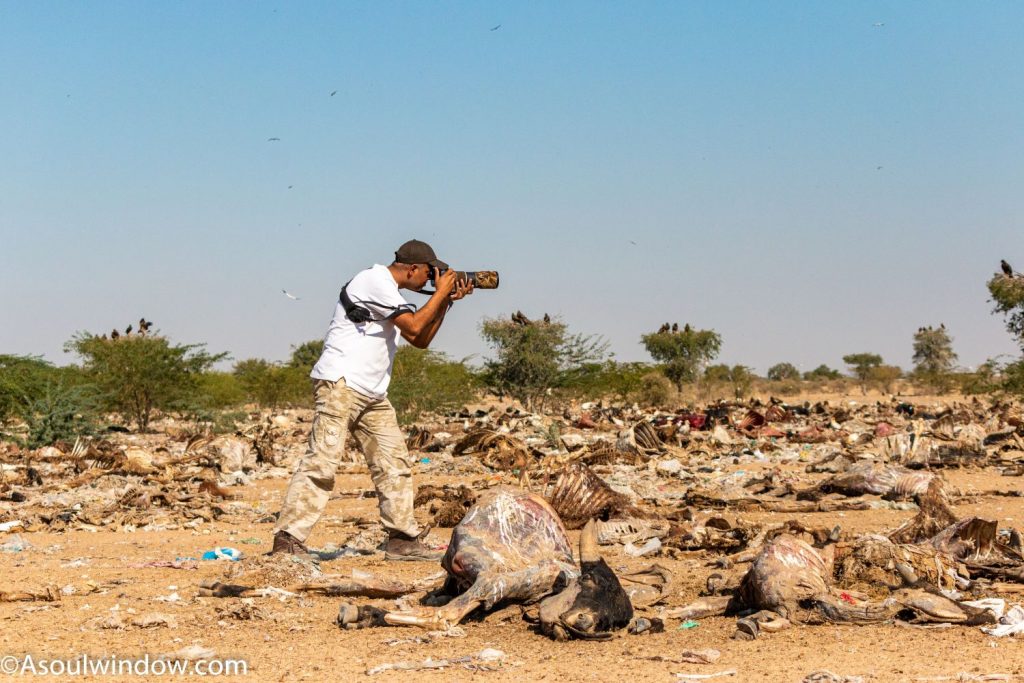
During sun set, my guide took me to a spot where I could click the silhouette of a vulture sitting on the dry branch of the tree. The setting sun encircling the vulture made for a dramatic wildlife shot!
Here is another photography tip. You should wait and observe a lone or set of vultures. You never know when you end up taking an award-winning action shot of the birds. Some of the action shot ideas include
- Bird in conflict
- Bird behaviour
- A preying Bird
- Bird taking flight etc
Food and water at Jorbeer Conservation Reserve
It was nauseating at times which is why I refused to eat anything until I left Jorbeer Conservation Reserve. My stomach churned with the sight of so many large dead animals. It was not until I had a shower at my homestay, did I eat anything, which is very uncharacteristic of me. I mostly eat on the move during travels.
Moreover, there are no restaurants, cafes, dhaba or even a tea stall or small shop inside the Jorbeer Conservation Reserve. Even outside the boundaries there are no shops and restaurants. Therefore, it is advised to carry lot of water with you. You can also carry some snacks if you have the heart to eat here. Also, carry paper soaps, in case you end up touching the flesh or bone of carcass by mistake.
Toilet in Jorbeer Conservation Reserve
There are no toilets in Jorbeer Conservation Reserve. For toilet, I went in the open fields. If you are a female, you can request the guide to take you at some secluded spot, perhaps behind a bush.
Books to be read
Below are some of the related books which you can read to enhance your knowledge on the birds found in Jorbeer Conservation Reserve.
- Important Bird and Biodiversity Areas of India
- Important Bird and Biodiversity Areas of India (2016) is an interesting book on Jorbeer.
Respect
- Do not litter
- Do not play loud music
- Do not leave behind any waste
- Do not smoke or drink alcohol here
- Do not shout. It may scare away the birds
- Maintain proper distance from all wildlife
- During photography avoid disturbing the raptors and other wildlife
How to reach Jorbeer Conservation Reserve
Jorbeer makes for a nice weekend destination from big Indian cities such as New Delhi and Jodhpur. It is very easy to arrive at Jorbeer. Here are all possible ways to reach Jorbir.
Rail
Bikaner has a major railway station which is connected to most big and small cities of India.
Air
Bikaner Airport (BKB) is the nearest airport from Jorbeer Conservation Reserve.
Bus
You can also reach Jorbeer Conservation Reserve via bus from nearby cities such as Jodhpur, Jaisalmer, Jaipur, Ajmer, Barmer, Kota, Jhunjhunu, Jodhpur, Udaipur, Agra, Ahmedabad and New Delhi.
Road Trip
You can also drive down to Jorbeer Conservation Reserve. Hiring a private vehicle means you can easily visit Tal Chappar Blackbuck Sanctuary as well. Many birding guides offer packages which include birding trips, food, stay and jeep service. You can also self-drive as road conditions are excellent throughout Rajasthan, whether urban or rural.
Distances from Jorbeer Conservation Reserve
Below are the distances from Jorbeer Conservation Reserve to other tourist places in ascending order. This distance chart will help you plan your movement in Rajasthan more efficiently.
Distance between Bikaner to Jorbeer Conservation Reserve is 14.5 kilometres and its takes 30 minutes to reach via Bikaner Napasar Ladunun Road.
Distance between Shri Karni Mata Ji Mandir at Deshnok to Jorbeer Conservation Reserve is 21 kilometres and its takes 30 minutes to reach via Bikaner Napasar Ladunun Road.
Distance between Nagaur to Jorbeer Conservation Reserve is 111 kilometres and its takes 2 hours to reach via NH62.
Distance between Tal Chappar Bird Sanctuary to Jorbeer Conservation Reserve is 139 kilometres and its takes 2 hours and 30 minutes to reach via MDR 38 and NH11.
Distance between Jodhpur to Jorbeer Conservation Reserve is 243 kilometres and its takes 4 hours and 30 minutes to reach via NH62.
Distance between Ajmer to Jorbeer Conservation Reserve is 260 kilometres and its takes 5 hours and 30 minutes to reach via Sardarshahr-Ajmer Road.
Distance between Jaipur to Jorbeer Conservation Reserve is 343 kilometres and its takes 5 hours and 50 minutes to reach via NH52 and NH 11.
Distance between New Delhi to Jorbeer Conservation Reserve is 461 kilometres and its takes 8 hours and 30 minutes to reach via RJ SH 6.
Conclusion: Why visit Jorbeer Conservation Reserve?
Here is the bottom line. If we leave the vultures and raptors alone, they play their role with smooth efficiency. Not only do they quietly dispose of the carcasses, but also keep the ecosystem healthy and clean. We should not ignore that vultures have always been an inseparable part of our habitat. The decreasing number of vultures will lead to spread of diseases, lack of biodiversity and disastrous waste management. Even the ancient Hindu scriptures have treated raptors with respect. In a nutshell, they are indeed integral to the health of humanity.
To sum up, we must all collectively create awareness around harmful drugs, pesticides and wildlife conservation for a healthier tomorrow. The vultures cause no harm to humans. Why should we treat them any different either!
Who would have thought that I would end up spotting some of the rarest birds in a carcass dump yard? Chasing birds in a carrion dump was never the wildest of my dreams. And still I found myself doing exactly that on a cold winter morning of Rajasthan. If you are a true birdwatcher, I am sure you will also love to give yourself a little discomfort and follow the footsteps of some of the most serious ornithologists of the world. Jorbeer Conservation Reserve is perhaps one of the world’s greatest sites where you can spot various rare species of vultures in the thousands! Do not miss this opportunity.
Checklist of birds found in Jorbeer Conservation Reserve Bikaner
As many as 243 different species of birds have been observed in the Jorbeed Conservation Reserve Bikaner. This complete checklist comprises of all the birds which have been found in Jorbeer throughout the year.
Below is the most complete checklist of birds found in Jorbeer Conservation Reserve Bikaner
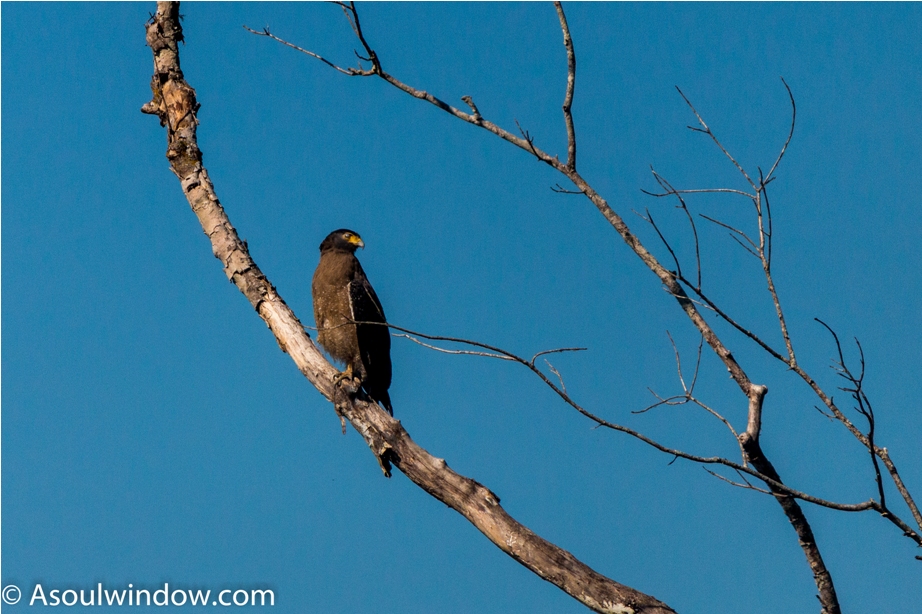
Vultures, Hawks, and Allies
- Osprey
- Black-winged Kite
- Egyptian Vulture
- Oriental Honey-buzzard
- Red-headed Vulture
- Cinereous Vulture
- White-rumped Vulture
- Indian Vulture
- Himalayan Griffon
- Eurasian Griffon
- Gyps sp.
- old world vulture sp.
- Crested Serpent-Eagle
- Short-toed Snake-Eagle
- Indian Spotted Eagle
- Greater Spotted Eagle
- Booted Eagle
- Tawny Eagle
- Steppe Eagle
- Imperial Eagle
- Bonelli’s Eagle
- Aquila sp.
- White-eyed Buzzard
- Eurasian Marsh-Harrier
- Pallid Harrier
- Montagu’s Harrier
Other Raptors and birds of prey
- Accipiter sp.
- Black Kite
- Brahminy Kite
- Buteo/eagle sp.
- Eagle sp.
- Eurasian Sparrowhawk
- Long-legged Buzzard
- Pallas’s Fish-Eagle
- Shikra
- White-tailed Eagle
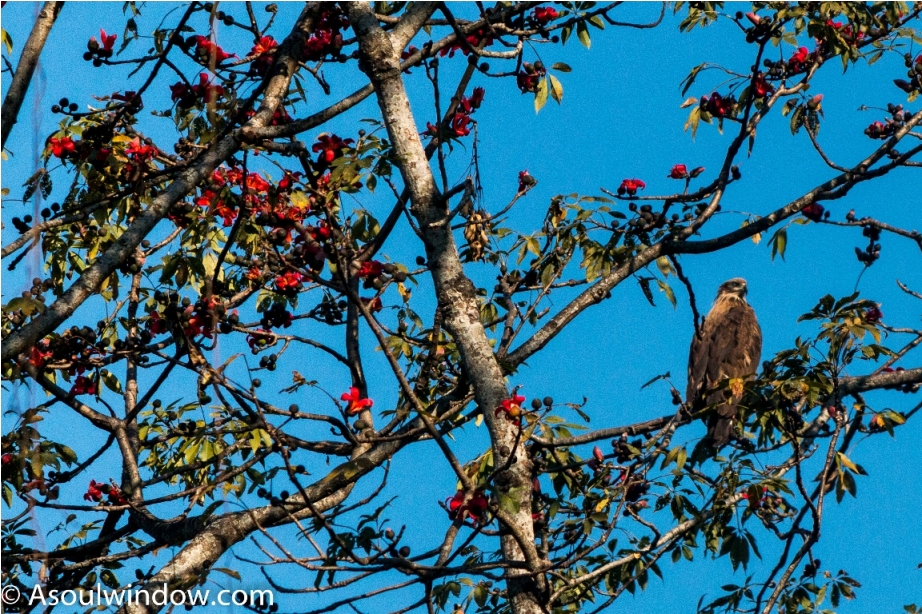
Falcons and Caracaras
- Eurasian Hobby
- Eurasian Kestrel
- falcon sp.
- Laggar Falcon
- Peregrine Falcon
- Red-necked Falcon
Ravens, Crows, Jays and Magpies
- Common Raven
- crow sp.
- House Crow
- Large-billed Crow
- raven sp.
- Rufous Treepie
Owls
- Indian Scops-Owl
- Short-eared Owl
- Spotted Owlet
Cranes
- Common Crane
- Demoiselle Crane
Storks
- Painted Stork
- Woolly-necked Stork
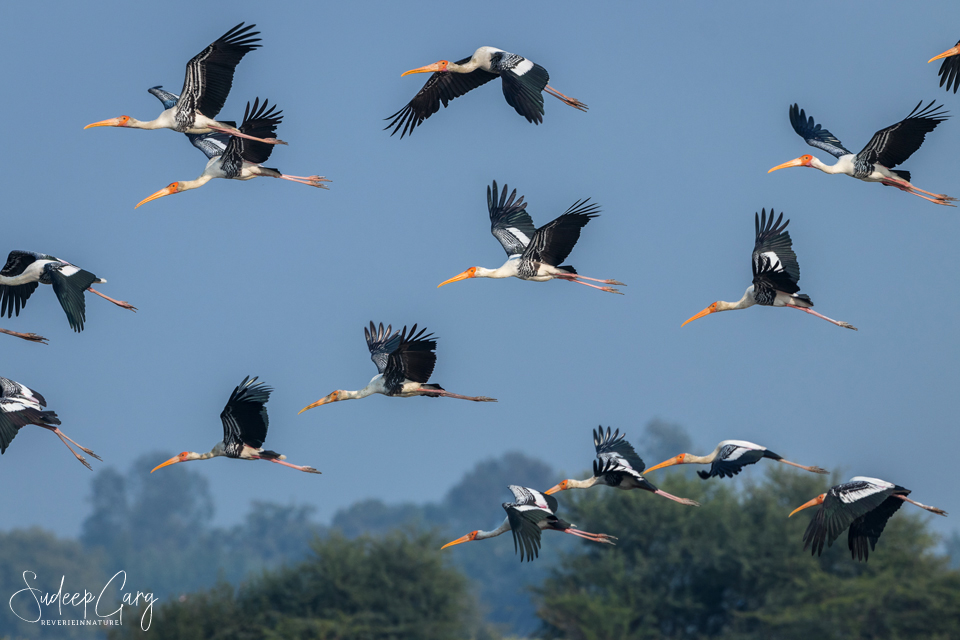
Herons, Ibis, and Allies
- Black Bittern
- Black-crowned Night-Heron
- Cattle Egret
- Glossy Ibis
- Gray Heron
- Great Egret
- Indian Pond-Heron
- Intermediate Egret
- Little Egret
- Purple Heron
Babblers
- Common Babbler
- Jungle Babbler
Laughingthrushes and Allies
- Large Gray Babbler
Parrotbills, Wrentit, and Allies
- Yellow-eyed Babbler
Leaf Warblers
- Common Chiffchaff
- Hume’s Warbler
- Phylloscopus sp.
- Sulphur-bellied Warbler
Reed Warblers and Allies
- Booted/Sykes’s Warbler
- Sykes’s Warbler
Sylviid Warblers
- Asian Desert Warbler
- Lesser Whitethroat
- Sylvia/Curruca sp.
Prinia
- Ashy Prinia
- Plain Prinia
- prinia sp.
- Zitting Cisticola
Cisticolas and Allies
- Common Tailorbird
- Delicate Prinia
- Gray-breasted Prinia
- Jungle Prinia
- Rufous-fronted Prinia

Pigeons and Doves
- Columba sp.
- Eurasian Collared-Dove
- Laughing Dove
- Oriental Turtle-Dove
- pigeon/dove sp.
- Red Collared-Dove
- Rock Pigeon
- Spotted Dove
- Yellow-eyed Pigeon
- Yellow-footed Green-Pigeon
Shrikes
- Bay-backed Shrike
- Great Gray Shrike
- Isabelline Shrike
- Long-tailed Shrike
- Red-tailed Shrike
- Red-tailed/Isabelline Shrike
Vangas, Helmetshrikes, and Allies
- Common Woodshrike
Cuckooshrikes
- Small Minivet
Shorebirds
- Black-tailed Godwit
- Black-winged Stilt
- Bronze-winged Jacana
- Common Greenshank
- Common Sandpiper
- Eurasian Curlew
- Greater Painted-Snipe
- Green Sandpiper
- Indian Thick-knee
- Lesser Sand-Plover
- Little Ringed Plover
- Little Stint
- Marsh Sandpiper
- Peep sp.
- Pheasant-tailed Jacana
- Pied Avocet
- Red-wattled Lapwing
- Ruff
- Spotted Redshank
- Temminck’s Stint
- White-tailed Lapwing
- Wood Sandpiper
- Yellow-wattled Lapwing
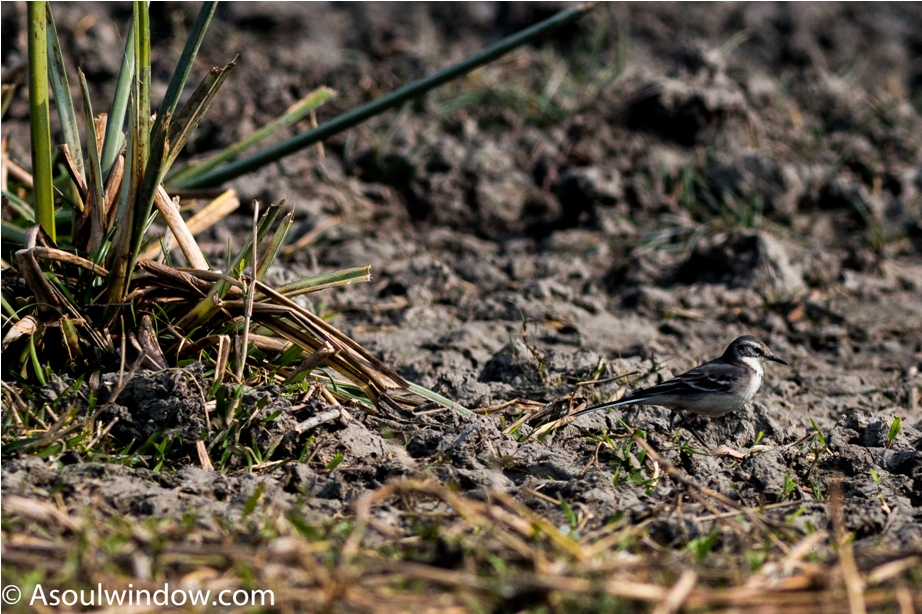
Wagtails and Pipits
- Citrine Wagtail
- Gray Wagtail
- Long-billed Pipit
- Olive-backed Pipit
- Paddyfield Pipit
- pipit sp.
- Tawny Pipit
- Tree Pipit
- wagtail sp.
- Water Pipit
- Western Yellow Wagtail
- White Wagtail
- White-browed Wagtail
Old World Flycatchers
- Black Redstart
- Bluethroat
- Brown Rock Chat
- Desert Wheatear
- Indian Robin
- Isabelline Wheatear
- Oriental Magpie-Robin
- Persian Wheatear
- Pied Bushchat
- Red-breasted Flycatcher
- Rufous-tailed Scrub-Robin
- Siberian Stonechat
- Variable Wheatear
- wheatear sp.
- White-browed Bushchat
Waterfowl
- Bar-headed Goose
- Common Pochard
- duck sp.
- Eurasian Wigeon
- Ferruginous Duck
- Gadwall
- Garganey
- Graylag Goose
- Green-winged Teal
- Indian Spot-billed Duck
- Knob-billed Duck
- Lesser Whistling-Duck
- Mallard
- Northern Pintail
- Northern Shoveler
- Red-crested Pochard
- Ruddy Shelduck
- teal sp.
- Tufted Duck
Swallows and Martins
- Barn Swallow
- Dusky Crag-Martin
- Gray-throated Martin
- Red-rumped Swallow
- Streak-throated Swallow
- Wire-tailed Swallow
Larks
- Greater Hoopoe-Lark
- Rufous-tailed Lark
- Desert Lark
- Black-crowned Sparrow-Lark
- Ashy-crowned Sparrow-Lark
- Singing Bushlark
- Indian Bushlark
- Greater Short-toed Lark
- Greater/Mongolian Short-toed Lark
- Greater Short-toed/Hume’s Lark
- Bimaculated Lark
- Oriental Skylark
- Crested Lark
- lark sp.
Bee-eaters, Rollers, and Allies
- Blue-cheeked Bee-eater
- European Roller
- Green Bee-eater
- Indian Roller
- Roller sp.

Drongos
- Black Drongo
- drongo sp.
Old World Sparrows
- House Sparrow
- Sind Sparrow
- Spanish Sparrow
- Yellow-throated Sparrow
Starlings and Mynas
- Asian Pied Starling
- Bank Myna
- Brahminy Starling
- Common Myna
- European Starling
- Rosy Starling
Grouse, Quail, and Allies
- Black Francolin
- Common Quail
- francolin sp.
- Gray Francolin
- Indian Peafowl
Weavers and Allies
- Baya Weaver
- Black-breasted Weaver
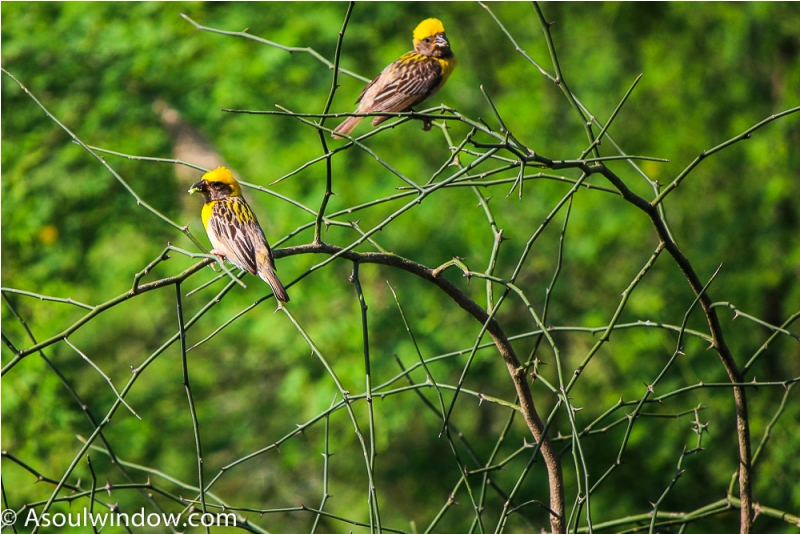
Estrildids
- Indian Silverbill
- Red Avadavat
- Scaly-breasted Munia
Cuckoos
- Asian Koel
- Common Hawk-Cuckoo
- Greater Coucal
- Pied Cuckoo
- Sirkeer Malkoha
Gulls, Terns, and Skimmers
- Black-headed Gull
- Brown-headed Gull
- Lesser Black-backed Gull
- Pallas’s Gull
- River Tern
Woodpeckers
- Black-rumped Flameback
- Eurasian Wryneck
- White-naped Woodpecker
- Woodpecker sp.
Parrots, Parakeets, and Allies
- Alexandrine Parakeet
- Plum-headed Parakeet
- Rose-ringed Parakeet
Rails, Gallinules, and Allies
- Black-headed Ibis
- Eurasian Moorhen
- Eurasian Spoonbill
- Red-naped Ibis
Cormorants and Anhingas
- Great Cormorant
- Indian Cormorant
- Little Cormorant
- Oriental Darter
Old World Buntings
- Red-headed Bunting
Sandgrouse
- Chestnut-bellied Sandgrouse
- Painted Sandgrouse
- sandgrouse sp.
Swifts
- Little Swift
- swift sp.
Bulbuls
- Red-vented Bulbul
- White-eared Bulbul
Kingfishers
- Common Kingfisher
- White-throated Kingfisher
Nightjars
- Savanna Nightjar
Barbets and Toucans
- Coppersmith Barbet
Flamingos
- Greater Flamingo
Grebes
- Little Grebe
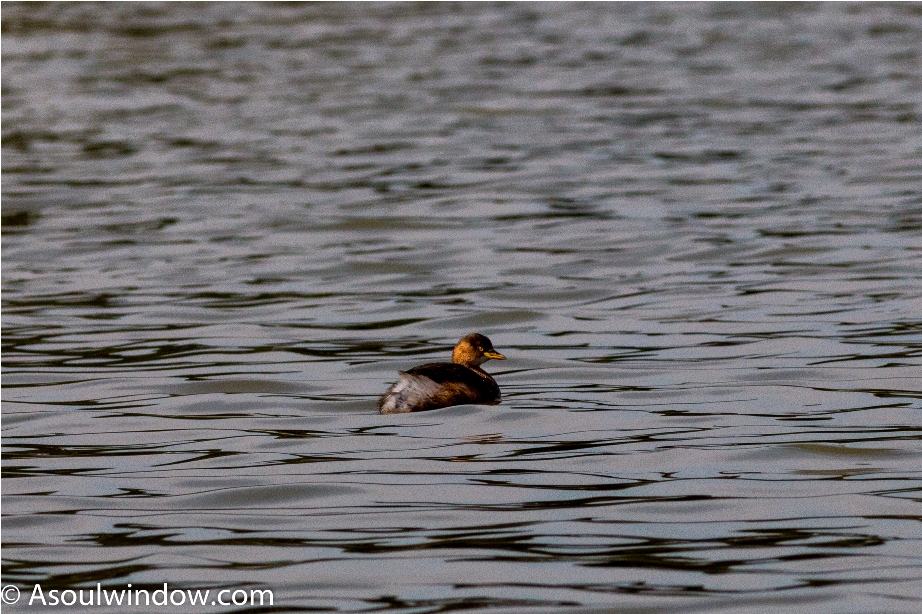
Old World Orioles
- Indian Golden Oriole
Fantails
- White-browed Fantail
Thrushes
- Black-throated Thrush
Sunbirds and Spiderhunters
- Purple Sunbird
Bustards
- Macqueen’s Bustard
Hoopoes
- Eurasian Hoopoe
Others
- Common Redshank
- Cream-colored Courser
- Indian Courser
- Small Buttonquail
- Tringa sp.
- Eurasian Coot
- Gray-headed Swamphen
- White-breasted Waterhen
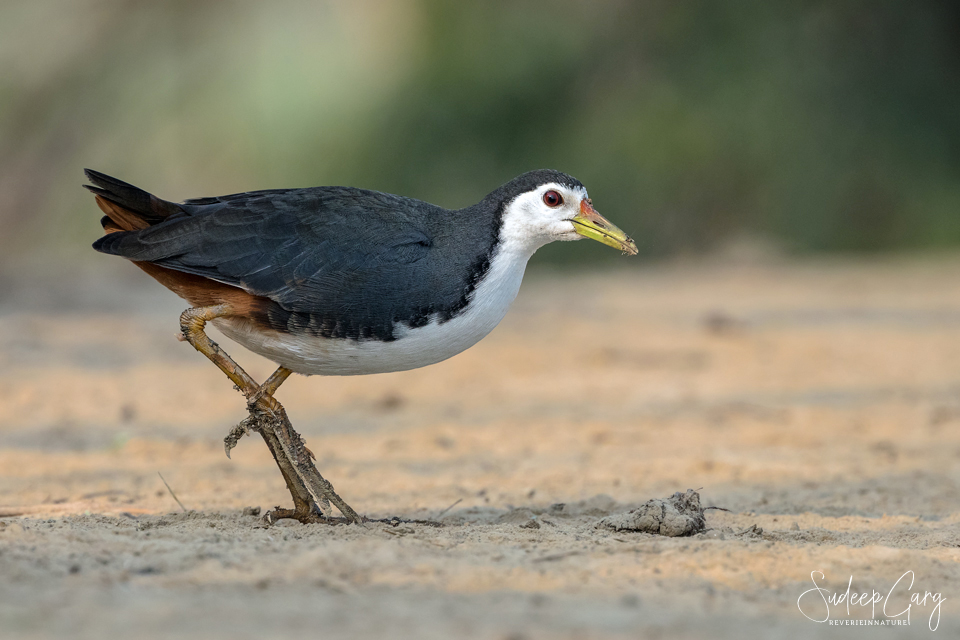
Top Travel Blogger from India

Wow, this is some place! Very exhaustive information.